Ah, the enchanting world of caffeinated beverages! Sipping a cup of liquid gold can be both a ritual and a magical experience.
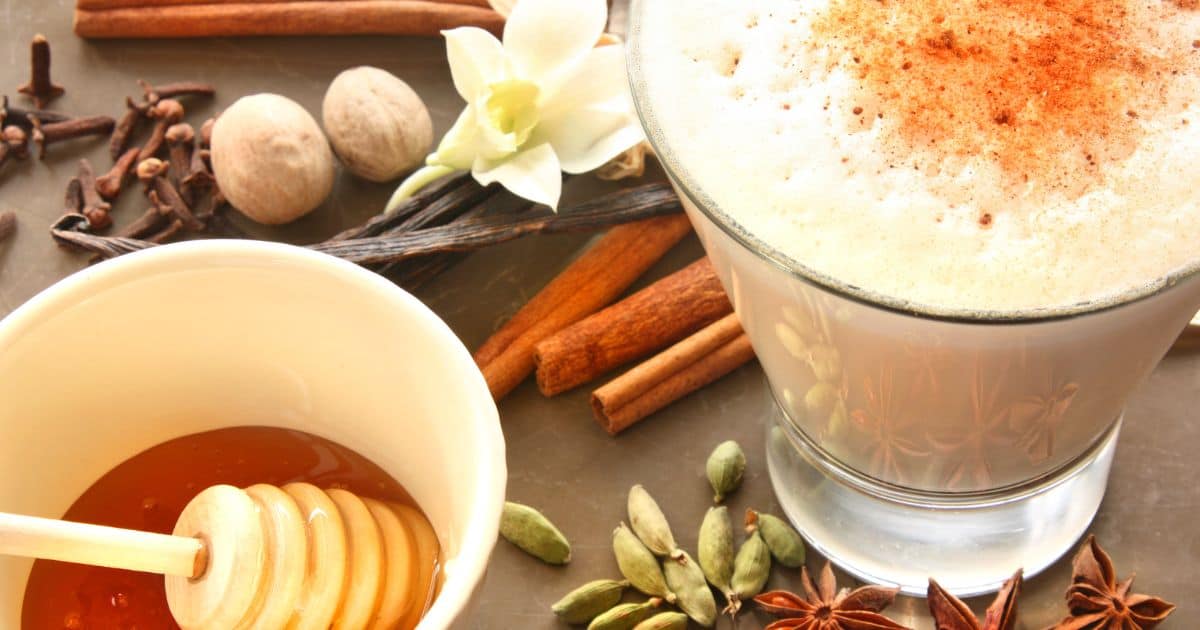
Have you ever ventured off the beaten path of your usual espresso? You might find yourself at your local coffee shop in the warm embrace of a chai latte.
If not, buckle up, my dear coffee enthusiast. Today, we’re diving into the spiced and frothy wonderland of chai tea lattes.
Say hello to your next obsession: the chai tea latte.
A Brief History Of Chai And Its Cultural Significance
Chai, also known as masala chai, has its roots in India, dating back thousands of years. It is believed that the ancient Indian royalty concocted a spiced tea mixture for its medicinal properties and delightful flavor. Chai gained popularity across India as the country began cultivating its own tea in the early 19th century, thanks to British influence.
Chai holds a special place in Indian culture, transcending social and economic boundaries. It is commonly enjoyed in homes, offices, and street-side tea stalls known as “chai wallahs.” These tea stalls are hubs of social interaction, where people gather to exchange stories, discuss politics, and take a break from the hustle and bustle of daily life.
Chai is an integral part of Indian hospitality, with hosts often offering their guests a cup of freshly brewed, aromatic chai as a symbol of warmth and welcome.
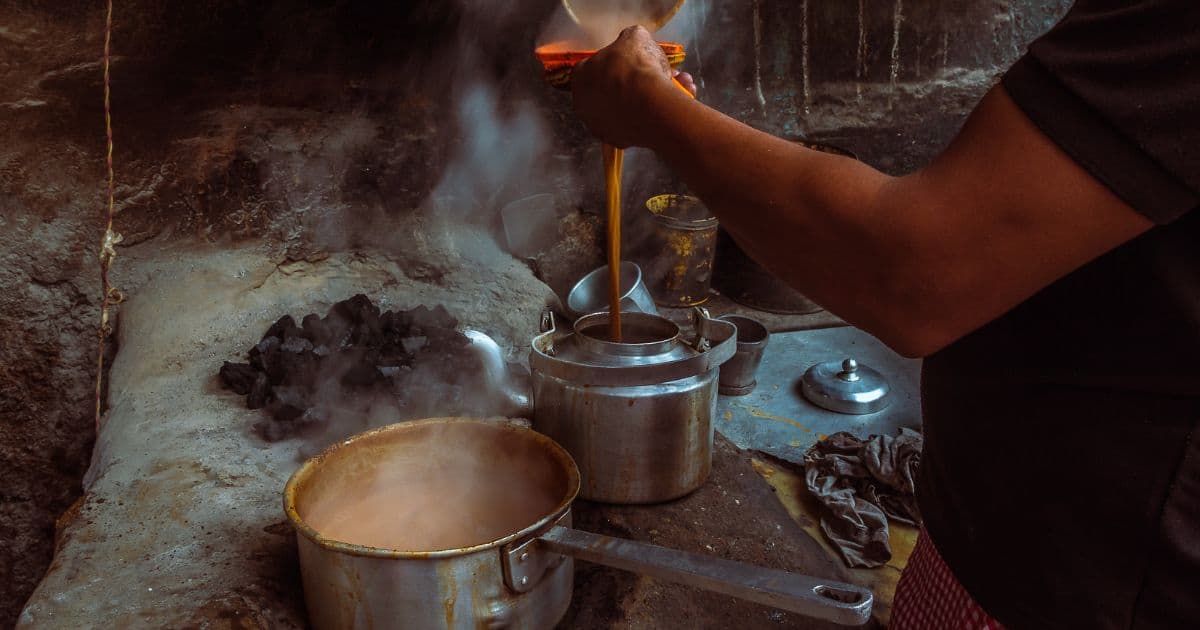
What Is A Chai Latte Made Of?
A chai latte is a delicious blend of:
Chai tea: A rich and aromatic tea infused with spices like cinnamon, cardamom, ginger, and cloves.
Steamed milk: Adds creaminess to the concoction, making it extra smooth and delightful.
Sweetener: Often honey, sugar, or a syrup is added to balance the spices and add a touch of sweetness.
Want to make a chai latte at home? It’s simple!
Brew a strong cup of chai tea.
Steam or froth your favorite milk.
Combine the tea and milk, then sweeten to taste.
Top with a sprinkle of cinnamon or nutmeg for an extra dose of spice. Enjoy!
Different Spices Used In Chai And Their Health Benefits
Cinnamon:
Cinnamon is not only a fragrant and warming spice, but it also boasts numerous health benefits. It has antioxidant, anti-inflammatory, and antimicrobial properties. Studies suggest that cinnamon may help regulate blood sugar levels, making it a potentially beneficial spice for those with diabetes.
Cardamom:
Cardamom, another key ingredient in chai, is known for its unique, sweet, and aromatic flavor. It has antioxidant and anti-inflammatory effects, and research indicates that it may help lower blood pressure, improve digestion, and provide relief from respiratory issues.
Ginger:
Ginger, with its bold and spicy taste, is a vital component of traditional chai. It is well-known for its anti-inflammatory and antioxidant properties. Ginger can aid digestion, help alleviate nausea, and may even reduce muscle pain and soreness.
Cloves:
Cloves, with their sweet and earthy flavor, add depth to the chai experience. They are packed with antioxidants and have antimicrobial properties. Cloves may help regulate blood sugar levels and support liver health.
Other possible spices and their benefits:
Chai recipes can also include additional spices like black pepper, nutmeg, fennel, and star anise. Each of these spices contributes its unique flavor and health benefits. For example, black pepper can enhance nutrient absorption, while nutmeg may boost mood and brain health. By experimenting with various spice combinations, you can create your personalized chai blend with an array of health benefits.
Related Article: Does Cinnamon Reduce Acid in Coffee?
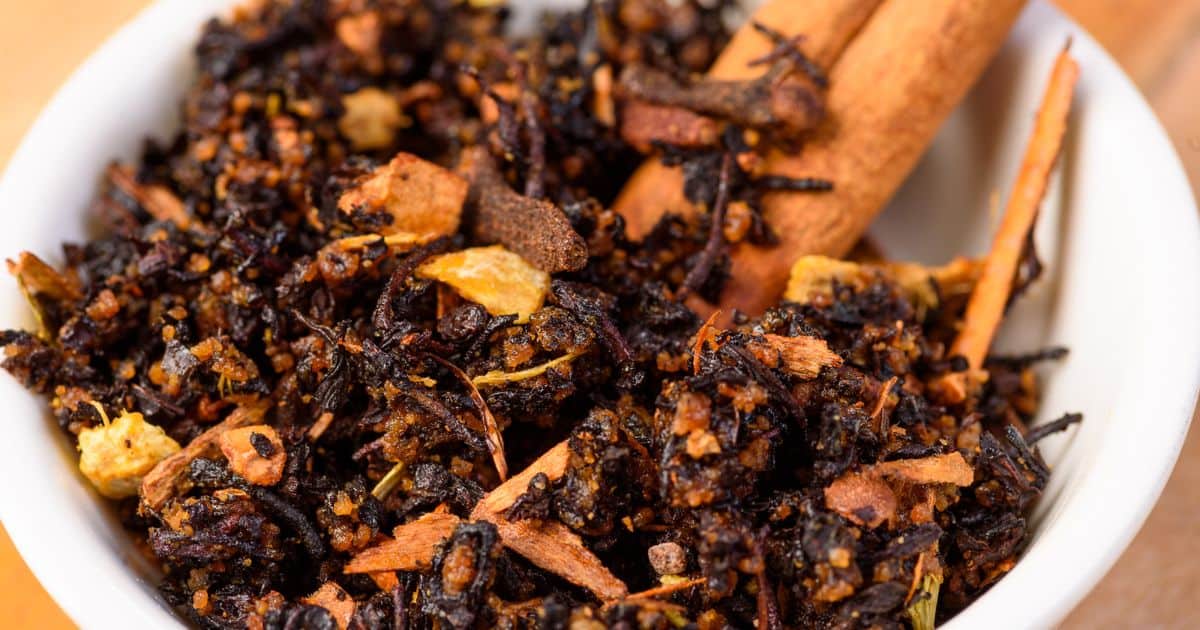
Tips For Selecting The Best Tea And Spices For Chai At Home
Choosing the right tea base:
While black tea is the traditional choice for chai, you can experiment with different tea varieties such as green, white, or even rooibos. When selecting your tea base, opt for high-quality, loose-leaf tea to ensure a robust and flavorful brew. For a more authentic experience, consider using Assam or Darjeeling tea, which originate from India.
Finding high-quality spices:
To create a truly aromatic and delightful chai blend, invest in high-quality, whole spices. Fresh spices release more flavor and aroma compared to pre-ground options. Look for spices that are vibrant in color, have a strong aroma, and are free from any signs of mold or dampness. You can find high-quality spices at specialty stores, online retailers, or local markets.
Customizing your chai blend:
One of the joys of making chai at home is the ability to customize your spice blend to suit your preferences. Start with a basic recipe and adjust the spice ratios to create your perfect balance. You can also experiment with less common spices like fennel, star anise, or even a touch of cayenne pepper for a unique twist. Remember to adjust the sweetness and milk to complement your personalized blend.
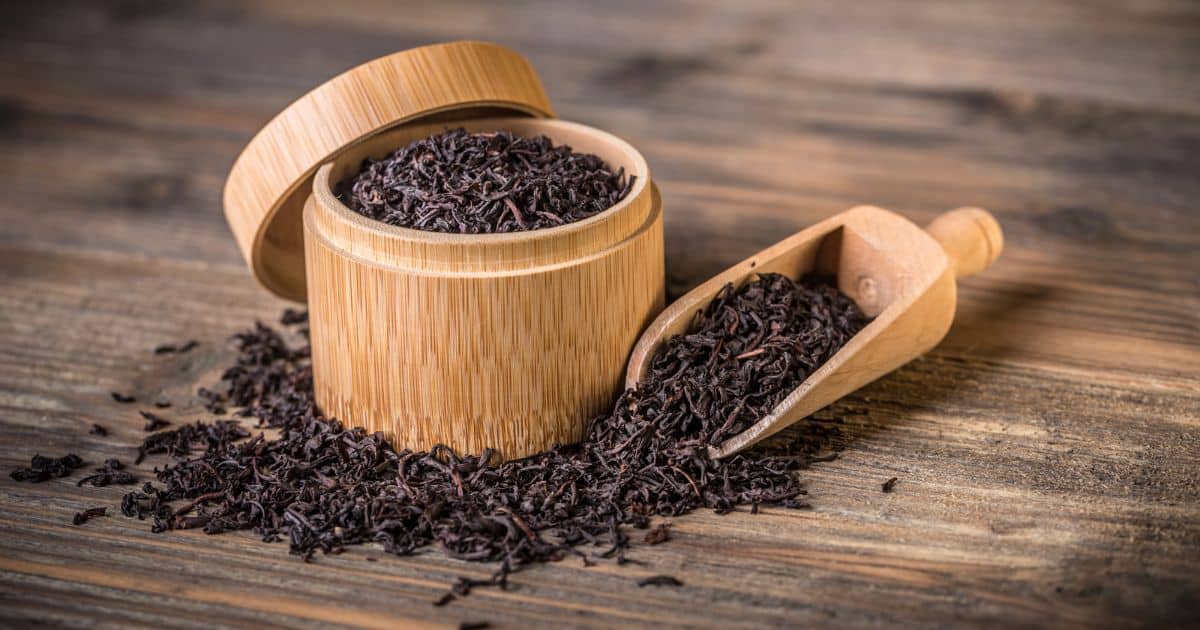
Is A Chai Latte A Coffee Or Tea?
Chai Lattes Are Tea-based Beverages, Not Coffee.
The base is a spiced black tea, which is then combined with milk and sweetener to create the latte.
Coffee And Tea-based Lattes Have Some Differences:
Coffee lattes use espresso shots, while tea lattes use steeped tea leaves.
The flavor profiles are distinct, with coffee lattes offering a bold, roasted taste, and tea lattes providing a more subtle, spiced experience.
What Is The Difference Between Chai Tea And Chai Tea Latte?
Chai tea, an age-old Indian beverage, is a blend of:
Black tea: Provides a robust base for the spices.
Aromatic spices: Such as cinnamon, cardamom, ginger, and cloves, which create a unique and complex flavor.
Comparing chai tea and chai tea latte in terms of preparation and taste:
Chai tea is often enjoyed without milk, while a chai latte combines the spiced tea with frothy, steamed milk.
Chai tea can be less sweet or unsweetened, but chai tea lattes are typically sweetened to balance the spices and create a richer taste.
The texture differs, with chai tea being a clear liquid, and chai lattes boasting a creamy, frothy consistency.
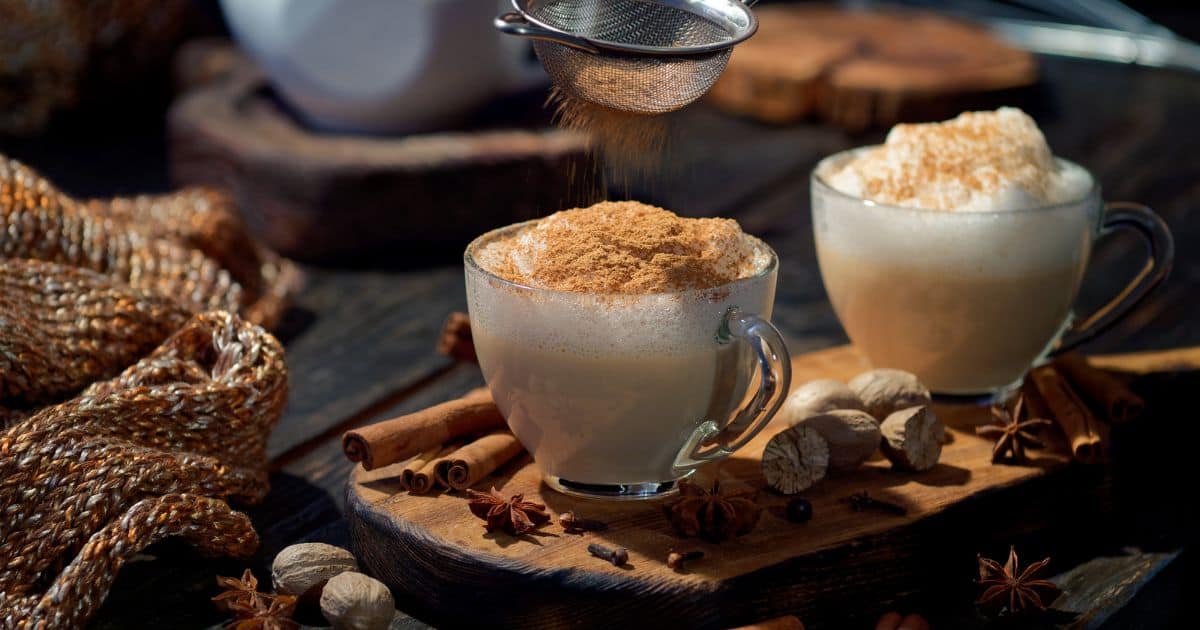
Does Chai Latte Have Caffeine In It?
Chai tea lattes do contain caffeine, thanks to the black tea base that serves as the foundation of this spicy drink. The amount of caffeine can vary depending on the type of tea and brewing method used.
When comparing chai lattes to other popular beverages, they generally have less caffeine than coffee-based drinks like espresso or drip coffee. However, they do contain more caffeine than most herbal teas, which typically have little to no caffeine.
If you’re looking for a caffeine-free option, don’t worry! Decaffeinated chai tea is available, allowing you to enjoy a chai latte without the extra buzz.
Chai Tea Latte with Espresso: The Ultimate Spicy Coffee Drink
As coffee shops continue to innovate and experiment with modern chai latte creations, one popular variation is the “dirty chai latte.” A dirty chai combines the best of both worlds, blending the spicy and aromatic flavors of a traditional chai tea latte with the bold and robust kick of espresso. This enticing fusion has been gaining popularity among coffee enthusiasts and chai lovers alike.
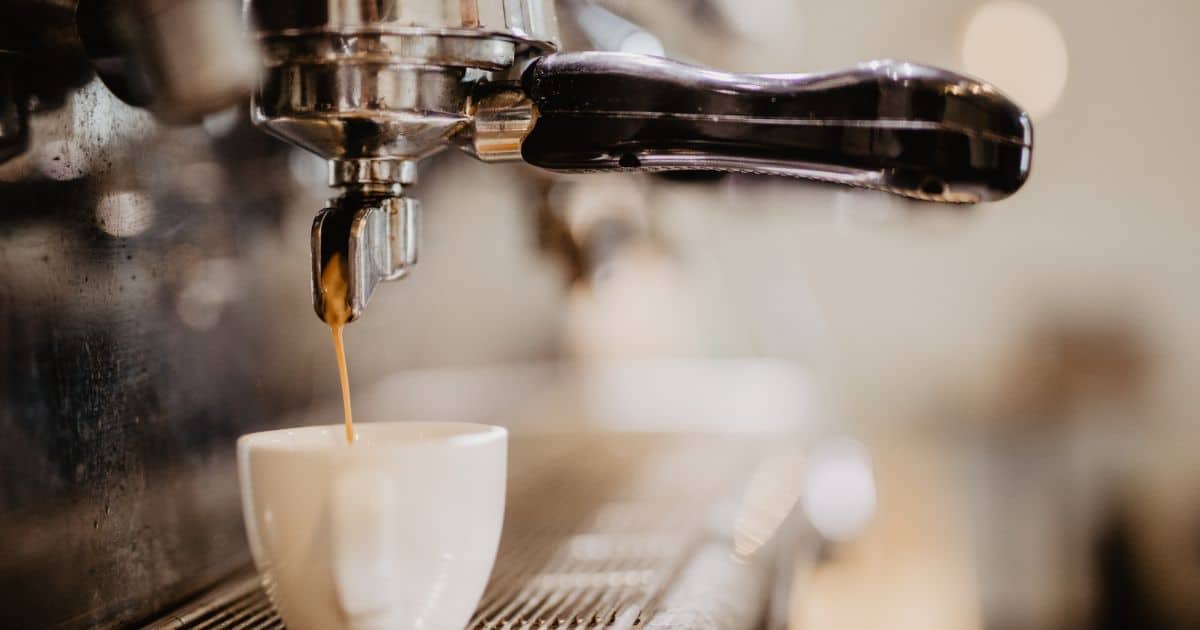
The dirty chai is an ideal choice for those looking for a unique caffeine boost with a twist. Many coffee shop menus now offer this spicy coffee drink on their menus, and it’s quickly becoming a favorite among patrons. The combination of the rich, complex flavors of chai with the deep, satisfying notes of espresso creates a harmonious blend that will leave your taste buds craving more.
If you’re feeling adventurous and want to try your hand at making your own modern chai latte with espresso, it’s a simple addition to your regular chai tea latte recipe. Brew a shot of espresso and add it to your chai tea and milk mixture. This little extra touch will transform your classic chai latte into a dirty chai, a beverage that is sure to impress and delight.
Related Article: Tips and Tricks for Ordering the Best Starbucks Drinks
Is A Chai Tea Latte Good For You?
Chai tea lattes come with health benefits as well as potential concerns:
The spices in chai, such as cinnamon and ginger, offer antioxidant and anti-inflammatory properties.
Black tea, the base of chai, contains compounds that can support heart health and mental alertness.
On the flip side, chai tea lattes can be high in sugar and calories, especially when prepared with sweeteners and whole milk.
Tips for making a healthier chai latte at home:
Opt for a sugar substitute or reduce the amount of sweetener used.
Choose a lower-calorie milk, such as almond or skim milk, instead of whole milk.
Brew your own chai tea from scratch to control the ingredients and avoid preservatives or artificial flavors.
Related Article: Coffee Revolution: How Oat Milk Is Transforming Your Daily Brew
Final Thoughts
In this caffeinated journey, we’ve explored the enchanting world of chai tea lattes, delving into their history, ingredients, and the delightful spices that give them their unique flavor. Chai tea lattes offer a warming and comforting alternative to coffee, while providing a variety of health benefits.
With the tips and knowledge shared in this article, you can now embark on your own adventure of crafting the perfect chai tea latte at home or ordering one at your local coffee shop.
So, go ahead and embrace the magical experience of sipping on a cup of spiced, frothy goodness. It might just become your next obsession!
Frequently Asked Questions
How Do I Make A Vegan Chai Latte?
To make a vegan chai latte, simply replace the milk in the recipe with a plant-based alternative, such as almond, soy, or oat milk. Many of these options froth well and provide a creamy texture similar to dairy milk. When selecting a sweetener, opt for vegan-friendly options like agave syrup or maple syrup instead of honey.
Can I Make A Chai Latte With Different Types Of Tea?
Yes, you can experiment with different types of tea for your chai latte. While black tea is the traditional choice, you can try green tea, rooibos, or even white tea as the base. Each tea will offer a unique flavor profile, but remember that the caffeine content may differ depending on the tea you choose.
Is It Possible To Make An Iced Chai Latte?
Absolutely! To make an iced chai latte, follow the same process for making a hot chai latte, but instead of using steamed milk, use cold milk. Once you’ve mixed the chai tea and milk, pour the mixture over ice, and enjoy a refreshing, spiced treat perfect for warm weather. If you prefer a blended beverage, blend the chai latte with ice for a frosty, slushy-like consistency.
